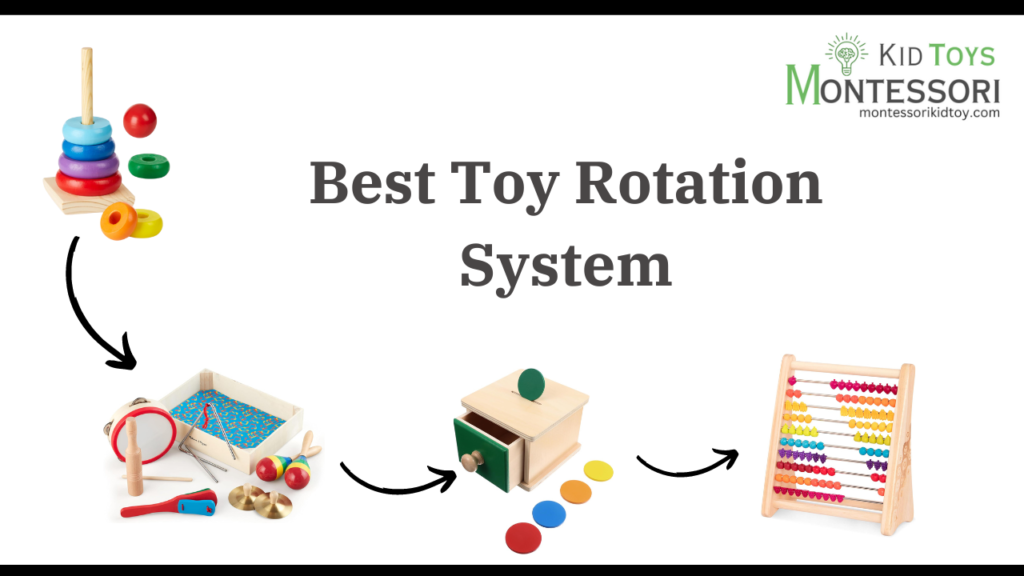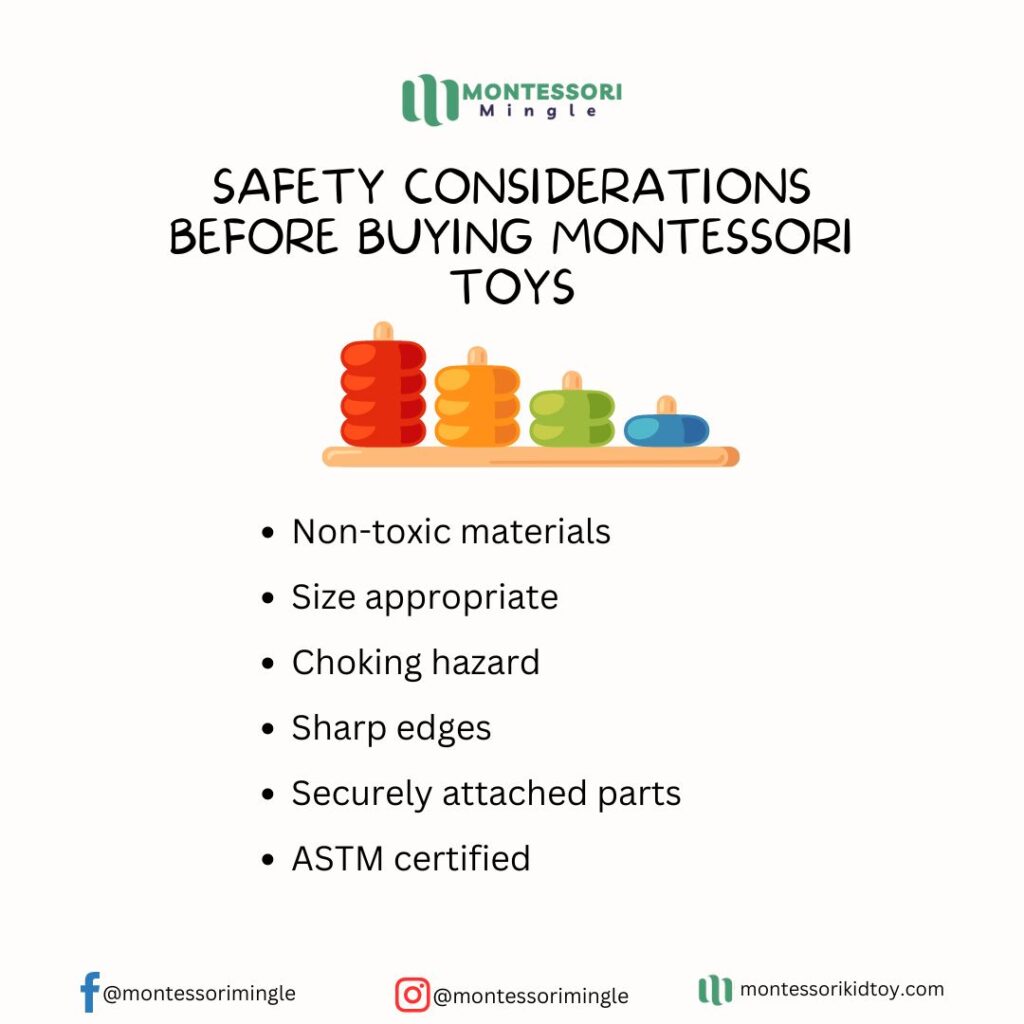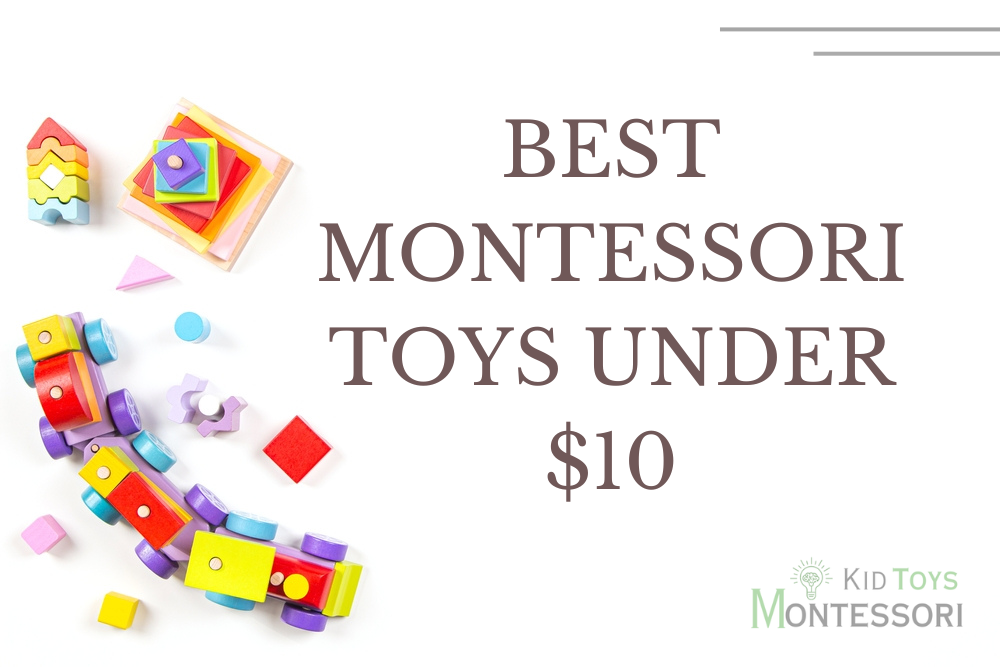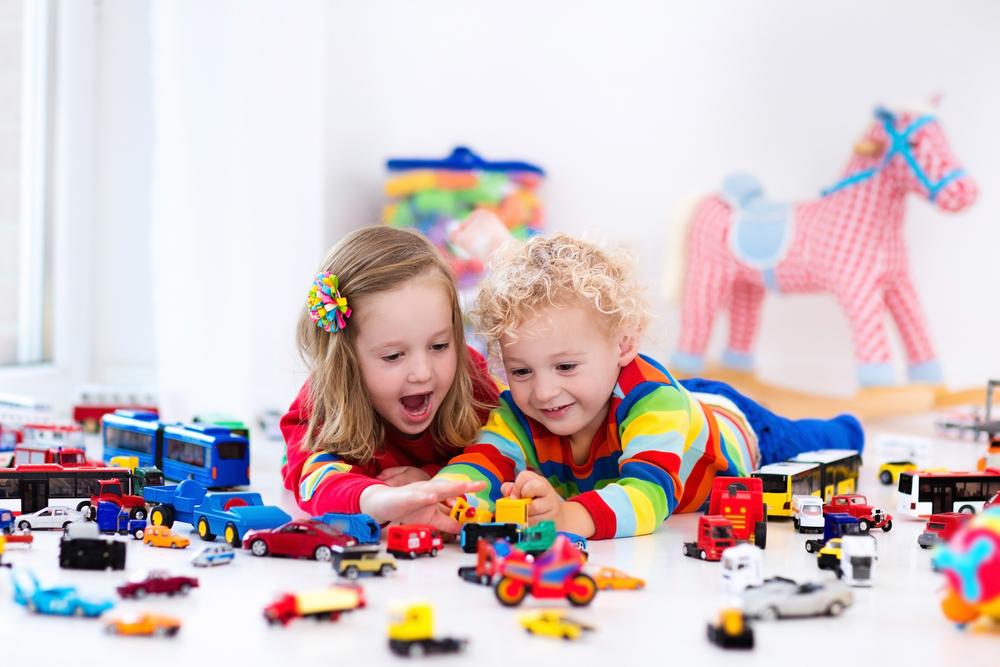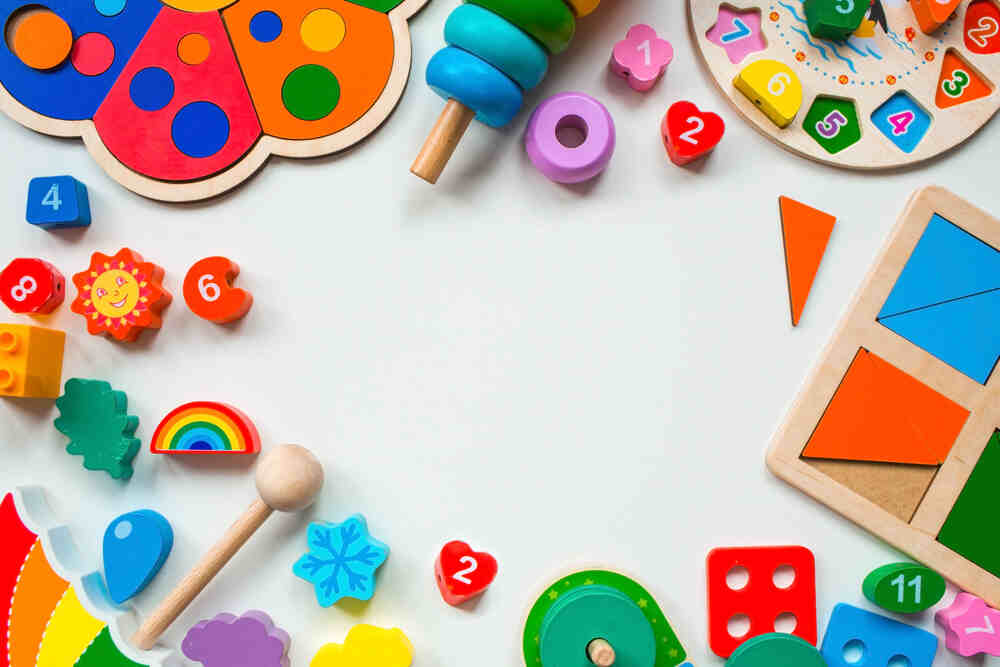Managing and organizing your child’s toys can be a game-changer. In this article, we’ll explore Why we should rotate toys When we should Rotate Montessori toys, and how many toys we should rotate once.
What is Montessori toy Rotation?
Montessori toy rotation is a method of managing and presenting toys to children deliberately and purposefully. Instead of overwhelming children with an abundance of toys all at once, Montessori toy rotation involves periodically rotating a curated selection of toys in and out of a child’s play area.
Montessori Toy rotation involves regularly switching out the toys available to your child, keeping only a select few accessible at any given time. The stored toys are then cycled back into the play area, creating a sense of novelty and excitement.
Benefits of Toy Rotation
This method has numerous benefits, including:
Reducing Overwhelm


Too many toys at once can overwhelm a child, leading to difficulty focusing on one activity. A well-organized rotation system helps create a more manageable play environment.
Encouraging Creativity
With fewer options, children are more likely to explore and engage deeply with the toys available. This promotes creativity and imaginative play.
Enhancing Focus
A limited selection of toys can help children concentrate on a specific activity, fostering better attention spans and problem-solving skills.
Minimizing Clutter
Toy rotation naturally reduces the number of toys visible at any given time, making clean-up easier and maintaining a clutter-free living space.
7 Tips For a Good Toy Rotation System
Now that we understand the benefits, let’s discover how to create an effective toy rotation system:
1. Assess Your Child’s Interests
Before setting up a rotation system, take note of your child’s current interests. This will help you curate a selection of toys that align with their developmental stage and preferences.
2. Categorize Toys
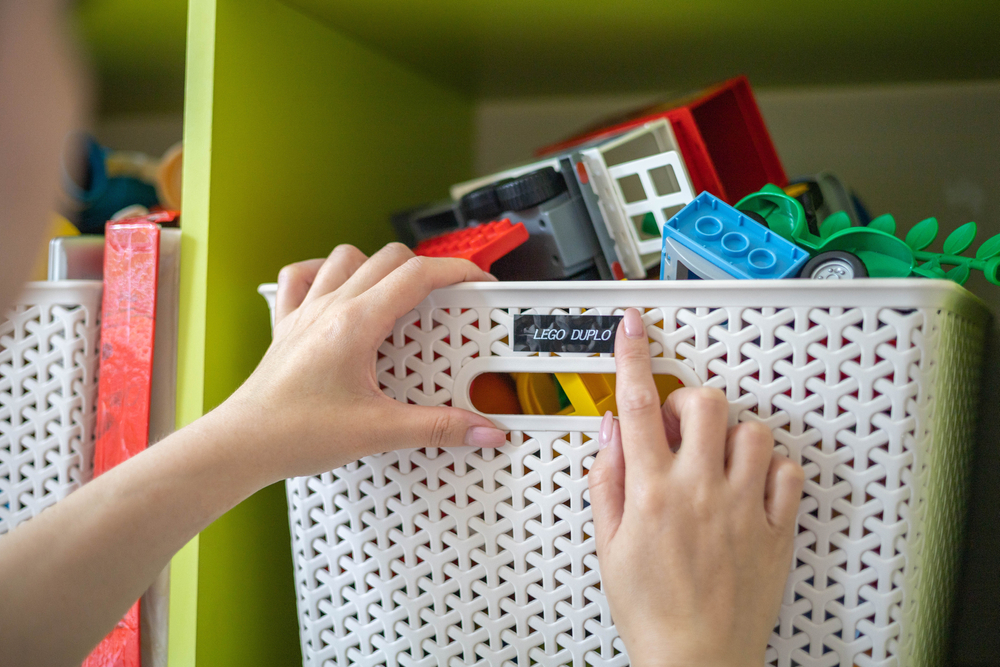

Divide your child’s toys into categories such as building blocks, art supplies, pretend play, and educational games. This will make it easier to rotate toys based on specific themes.
3. Establish a Rotation Schedule
Determine how frequently you want to rotate toys. A common schedule is every two weeks, but you can adjust based on your child’s attention span and the number of toys in rotation.
4. Storage Solutions
Invest in clear, labeled bins or storage containers for organizing the toys not in use. This makes it easy to locate specific items when rotating and ensures a tidy storage space. Read The guide on selecting the best Montessori Toy Storage for your Kid.
5. Involve Your Child


Include your child in the rotation process. Let them help choose which toys to bring back into rotation, promoting a sense of autonomy and responsibility.
6. Themed Rotations
Consider creating themed rotations based on seasons, holidays, or your child’s current interests. This adds an extra layer of excitement and keeps playtime dynamic.
7. Evaluate and Adjust
Regularly assess the effectiveness of your rotation system. Adjust the selection of toys based on your child’s evolving interests and developmental milestones.
Conclusion
A well-implemented toy rotation system can transform your child’s playtime into a more organized experience. By understanding your child’s preferences, categorizing toys, establishing a rotation schedule, and involving your child in the process, you’ll create an engaging environment that promotes creativity, focus, and a love for learning. Start your journey to a clutter-free and dynamic play space today!
FAQs
How often should I rotate Montessori Toys?
In Montessori principles, rotating toys every 1-2 weeks keeps play fresh and maintains children’s interest. This approach encourages exploration and prevents overstimulation, promoting sustained engagement and learning.
Why is toy rotation important in Montessori philosophy?
Toy rotation promotes sustained engagement and prevents overstimulation by offering a curated selection of toys at a time, encouraging deeper exploration and learning.
Should I involve my child in the toy rotation process?
Yes, Involving your child in selecting toys for rotation can empower them and encourage responsibility for their play environment.
